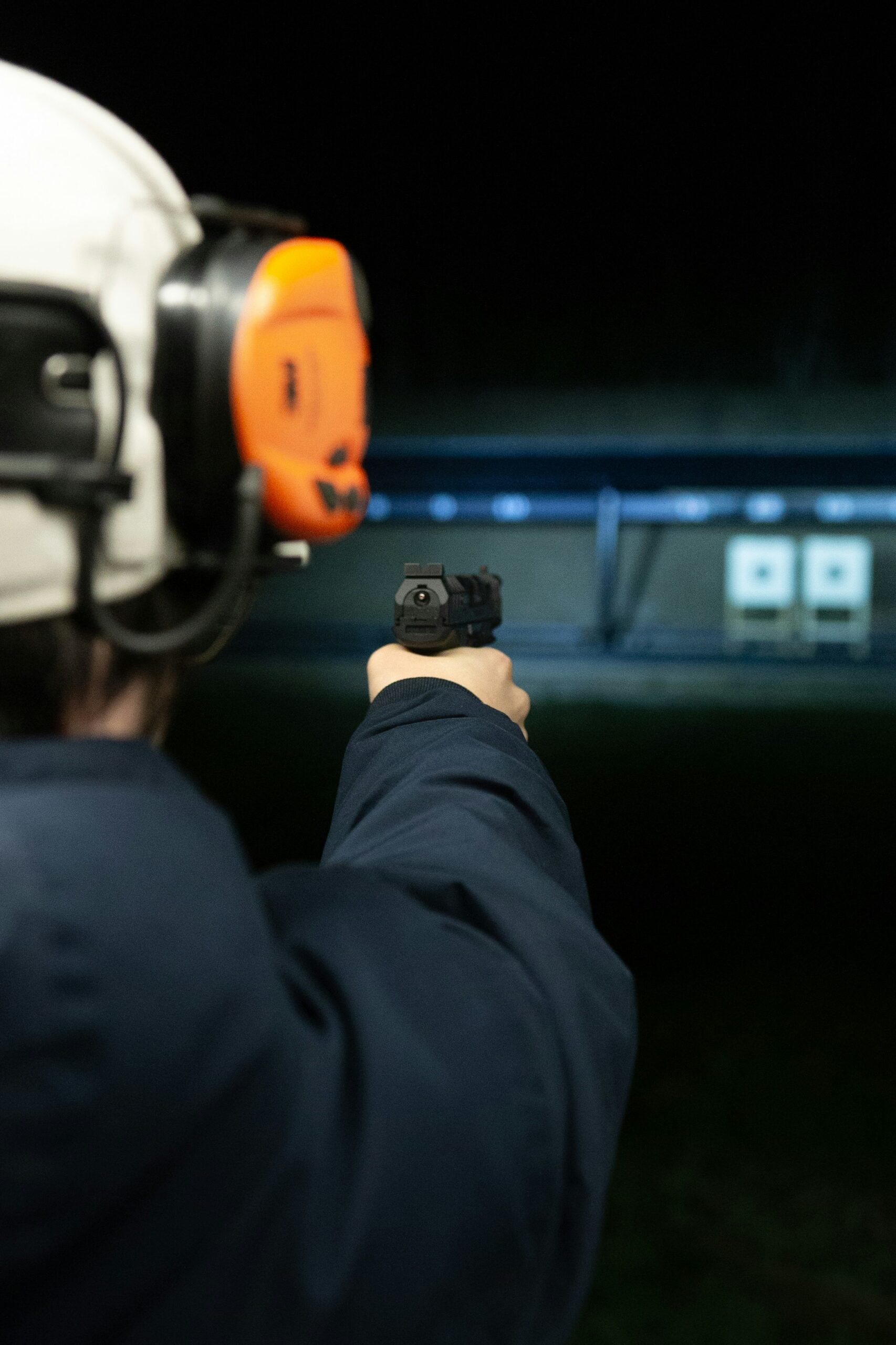Overview of the Incident
On a fateful day in October 2023, the Risbergska School in Örebro, Sweden, became the center of a shocking shooting incident that sent ripples of fear through the local community. This event unfolded at approximately 11:30 AM, during which the serene atmosphere that characterized the school and its neighborhood was abruptly shattered. Prior to the incident, the community enjoyed a reputation for safety, blending the elements of a tranquil educational setting with a supportive residential environment.
The initial reports indicated that gunfire erupted within the school premises, leading to an immediate lockdown to ensure the safety of students and staff. Witnesses described a scene of confusion and chaos, with students and teachers attempting to comprehend the gravity of the situation. The swift response by local authorities and emergency services played a crucial role in managing the immediate crisis. Police units were deployed, ensuring the evacuation of students while securing the area to minimize any potential further harm.
Emergency medical services quickly arrived on the scene to provide immediate assistance to the injured. As information began to surface, it became clear that the incident was a deeply troubling event that would impact the community significantly. School officials and local leaders also initiated communication strategies to provide updates to concerned parents and guardians, emphasizing reassurance and support in the wake of the chaos.
The aftermath of the shocking event left the community grappling with questions surrounding safety, mental health support, and preventive measures to avert future occurrences. As facts continue to emerge, the collective focus remains on understanding what led to this tragic shooting at Risbergska School and how to foster healing and recovery within the community.
Background on Risbergska School
Risbergska School, located in Örebro, Sweden, has established itself as a prominent educational institution since its inception in the early 20th century. Founded in 1913, the school was initially created to accommodate the growing demand for technical education in the region. Over the years, it has evolved from a vocational institution into a comprehensive school offering a range of academic programs to cater to its diverse student population. Today, Risbergska is known for its commitment to academic excellence and holistic student development.
The student body at Risbergska School has grown significantly, reflecting the increasing interest in its educational offerings. With a current enrollment of approximately 1,200 students, the school serves a wide demographic, drawing pupils from various backgrounds. The academic performance of Risbergska has consistently been commendable, with a high percentage of students achieving passing grades in national assessments. This success is attributed to the dedicated faculty and a rigorous curriculum that encourages critical thinking and practical application of skills.
Furthermore, Risbergska School plays a crucial role within the Örebro community, acting as a hub for various educational and extracurricular activities. The school regularly engages with local businesses and organizations, providing students with opportunities for internships and practical work experiences. This collaboration enriches the learning environment, allowing students to gain insights into real-world applications of their studies.
In addition to its academic functions, the school also promotes a strong sense of community and inclusion. Through various events and initiatives, Risbergska encourages student participation and fosters an environment of respect and collaboration. The school’s impact extends beyond academics, as it continually seeks to address the social needs of its students and the wider community, reinforcing its significance in local education.
Details of the Shooting
The recent shooting incident at Risbergska School in Örebro, Sweden, occurred on the afternoon of September 15, 2023. The event unfolded rapidly, causing widespread panic among students and staff. According to eyewitness accounts, the shooter, a 21-year-old male, entered the school premises at approximately 2:30 PM. Initial reports indicated that he began firing indiscriminately in various classrooms, targeting both students and faculty members.
The local authorities were alerted within minutes, and emergency services promptly arrived at the scene. Unfortunately, the shooting resulted in multiple casualties. Reports confirmed that two individuals lost their lives—both students—while several others sustained injuries. Emergency medical teams triaged the wounded at the site and transported them to nearby hospitals for urgent care. The chaotic environment exacerbated the overall confusion and heightened fears among those present.
As the situation unfolded, police initiated a lockdown of the area to ensure the safety of remaining students and staff. The shooter was taken into custody shortly after law enforcement received reports of the event, preventing further tragedy. The authorities conducted investigations to determine potential motives behind the attack. Preliminary insights suggested that the shooter had previously faced psychological issues and exhibited troubling behavior that went unaddressed.
The incident at Risbergska School has prompted discussions about school safety and mental health awareness within the community. With many questions still lingering regarding the underlying causes of the attack, officials are committed to understanding the full context. Engaging with mental health professionals and law enforcement will be essential in addressing the factors that contributed to this tragic occurrence.
Responses from Local Authorities
In the wake of the shooting incident at Risbergska School in Örebro, local authorities responded swiftly to manage the unfolding situation and address the concerns of the community. The police department, in particular, issued timely updates through various channels, emphasizing their commitment to public safety and reassurance. Following the event, a press conference was held where law enforcement officials outlined their initial actions, which included securing the scene, ensuring the safety of students and staff, and launching an immediate investigation into the circumstances surrounding the incident.
School officials also played a critical role in response efforts, implementing emergency protocols designed for such unforeseen circumstances. They collaborated closely with the police to facilitate communication with parents, ensuring they were informed and reassured about the safety of their children. Statements from the principal underscored the school’s commitment to providing a secure environment and their intent to support both students and staff as they navigated the aftermath of this traumatic event.
Government representatives commented on the situation, emphasizing the importance of community solidarity in facing such challenges. They highlighted the need for ongoing dialogues concerning school safety and mental health resources, underlining that this incident has spotlighted the necessity for preventive measures and awareness programs within educational institutions. An inquiry into the current safety protocols at schools across Örebro was suggested to evaluate their adequacy and effectiveness in ensuring student safety.
The investigation process initiated by the police involved gathering evidence, interviewing witnesses, and analyzing the incident’s context. Authorities assured the public that they would provide updates as the investigation progressed, reflecting their commitment to maintaining transparency throughout the process. In this way, local authorities aimed to foster public trust and collaborate with the community to enhance safety and support measures in light of this tragic incident.
Community and Parental Reactions
The recent tragic shooting incident at Risbergska School in Örebro has elicited a profound emotional response from both the local community and the parents of the students. In the aftermath of such a traumatic event, feelings of shock, grief, and anger have permeated the community. Parents, in particular, have expressed concerns regarding the safety of their children in educational environments, prompting an urgent need for dialogue about security measures in schools. An open forum was organized by local authorities, where parents gathered to voice their fears and seek reassurance about the safety protocols being implemented.
In addition to these gatherings, memorials occurred throughout Örebro, allowing the community to honor the victims and demonstrate solidarity. These memorials served as a poignant reminder of the fragility of life and the communal responsibility to ensure children’s safety. Flowers and candles adorned various public spaces, and many residents participated in vigils, signifying their support for the affected families and their shared commitment to preventing such tragedies in the future. These gatherings have become essential platforms for fostering community resilience and finding collective strength during this challenging time.
Mental Health Support for Affected Individuals
The trauma resulting from a shooting incident, such as the recent event at Risbergska School in Örebro, extends beyond physical injuries, deeply impacting the mental health of students, staff, and the wider community. Such events create an environment fraught with anxiety, confusion, and fear, significantly affecting emotional well-being. Consequently, the importance of mental health support following such tragedies cannot be overstated. Schools must prioritize mental health awareness as a critical aspect of their emergency response protocols.
In light of the incident, various counseling options and support services have been made available to those affected. These services typically include individual counseling sessions, group therapy, and workshops aimed at building resilience and coping strategies. Mental health professionals, such as school psychologists and licensed counselors, play a crucial role in providing a safe space for individuals to express their feelings and process the event. Engaging in these therapeutic environments promotes healing and assists students and staff in navigating the aftermath of trauma.
Furthermore, it is essential for schools to foster an ongoing dialogue about mental health. Implementing programs that focus on emotional intelligence, peer support, and stress management can encourage students and staff to seek help without stigma. Building a community centered on mental health awareness not only supports those directly involved but also cultivates a culture of empathy and understanding among students. Advocate for mental wellness initiatives by providing resources, workshops, and access to hotlines, ensuring that help is readily available when needed.
As the community continues to process the implications of this shooting incident, a strong emphasis on mental health support can be a beacon of hope and recovery. Ensuring access to appropriate mental health resources leads to resilience and aids in the shared journey toward healing for all affected individuals.
Historical Context of School Shootings in Sweden
School shootings, while relatively rare in Sweden, have become a matter of significant concern over the past few decades. The history of such incidents in the country provides a backdrop to the recent shooting at Risbergska School. One of the most notable events occurred in October 2004, when a shooting took place in a school in the suburb of Trollhättan. This tragedy claimed the lives of a teacher and several students, marking a significant turning point in Sweden’s approach to school violence.
In response to the Trollhättan shooting, the Swedish government initiated comprehensive reviews of safety protocols within educational institutions. Policymakers recognized the need for improved preventive measures to protect students and staff. As a result, several new initiatives were launched, focusing on enhancing school security and fostering a culture of awareness and communication among students and staff. This included the introduction of anti-bullying programs and mandatory training for teachers on recognizing and addressing violent behaviors among students.
Over the years, Sweden’s approach to school safety has evolved, emphasizing a proactive strategy combining law enforcement and school administration to detect potential threats. Nonetheless, additional instances of violence have underscored the ongoing challenges faced by educational systems in maintaining a safe environment. For example, in 2015, an attempted school shooting in Norrköping highlighted critical gaps in threat assessment protocols.
The recent shooting at Risbergska School echoes these past incidents, raising poignant questions about the effectiveness of existing preventive measures. As society grapples with the causes and consequences of such violence, discussions surrounding gun control, mental health support, and community engagement become increasingly central. Understanding the historical context of school shootings in Sweden not only informs responses to current crises but also highlights the essential need for continuous improvement and vigilance to ensure the safety of students across the country.
Policy Discussions and Reforms
The recent shooting incident at Risbergska School in Örebro has ignited a crucial conversation around policies related to gun control, school safety, and mental health reforms. In the aftermath of this tragic event, various stakeholders have begun voicing their opinions and proposing measures to prevent future occurrences. Politicians have taken a leading role in these discussions, with many advocating for stricter gun control laws. They argue that tighter restrictions on firearm access could significantly reduce the likelihood of similar incidents, particularly in educational settings.
Educators are also deeply involved in these discussions, concerned not only about the physical safety of students but also about the mental and emotional repercussions of such violence. Many educators emphasize the need for improved safety protocols within schools, including enhanced security measures and training for staff on how to respond in crisis situations. They argue that a proactive approach is necessary to foster an environment where students feel secure and protected, thereby promoting their overall well-being.
In addition to firearm policies and school safety measures, mental health professionals have highlighted the importance of addressing mental health issues as a contributing factor to violence in schools. They advocate for comprehensive mental health reforms that include increased access to counseling services and mental health education, aimed at both students and staff. By prioritizing mental health and providing support systems, the hope is to create an environment that recognizes warning signs and intervenes before violence occurs.
As these discussions progress, various proposals for legislation are emerging. Measures may include background checks for gun purchases, mandatory mental health screenings for potential gun owners, and funding for resources aimed at improving school safety. The collective aim of these reforms and policies is clear: to create a safer environment for students while also addressing the core issues contributing to school violence.
Looking Ahead: Future Safety Measures in Schools
In light of recent incidents, including the tragic shooting at Risbergska School in Örebro, it becomes imperative to explore proactive safety measures that can be adopted by educational institutions. Ensuring the safety and security of students and staff should be paramount, and communities must engage collaboratively in creating a safer school environment.
One of the proposed strategies is the implementation of advanced security systems in schools. This could include installing surveillance cameras, controlled access points, and additional training for security personnel. Such enhancements aim to deter potential threats and provide a rapid response in the event of an emergency. Modern technological solutions, including panic buttons and real-time communication systems, can significantly improve safety protocols and ensure that appropriate actions are taken swiftly.
Another important aspect is community engagement. Schools can benefit greatly from fostering relationships with local law enforcement and community organizations. By conducting joint training exercises and safety workshops, these partnerships can enhance preparedness and create a more robust emergency response framework. Engaging parents and community members in discussions about safety can also foster a collaborative atmosphere where everyone is invested in the well-being of students.
Educational programs play a critical role in cultivating a culture of respect and understanding among students. Implementing initiatives that promote conflict resolution, mental health awareness, and inclusion can preemptively address potential issues before they escalate. Programs aimed at educating students about the risks associated with violence and the importance of reporting suspicious behavior can empower them to take an active role in maintaining a safe environment.
In conclusion, integrating advanced security measures, promoting community engagement, and implementing educational programs can greatly enhance safety in schools. These multifaceted approaches not only aim to prevent violent incidents but also cultivate an environment that prioritizes the well-being and safety of students and staff alike.


